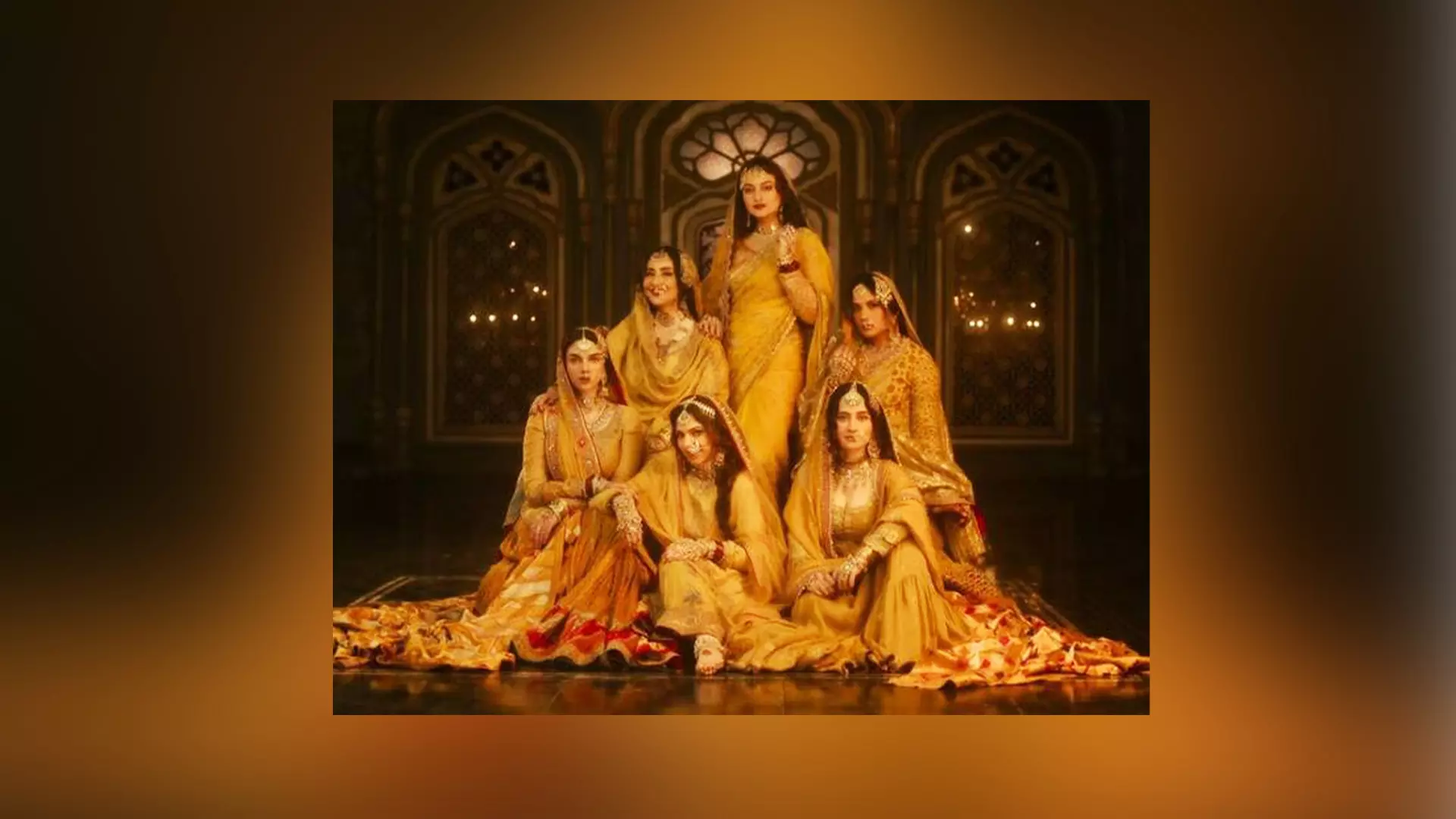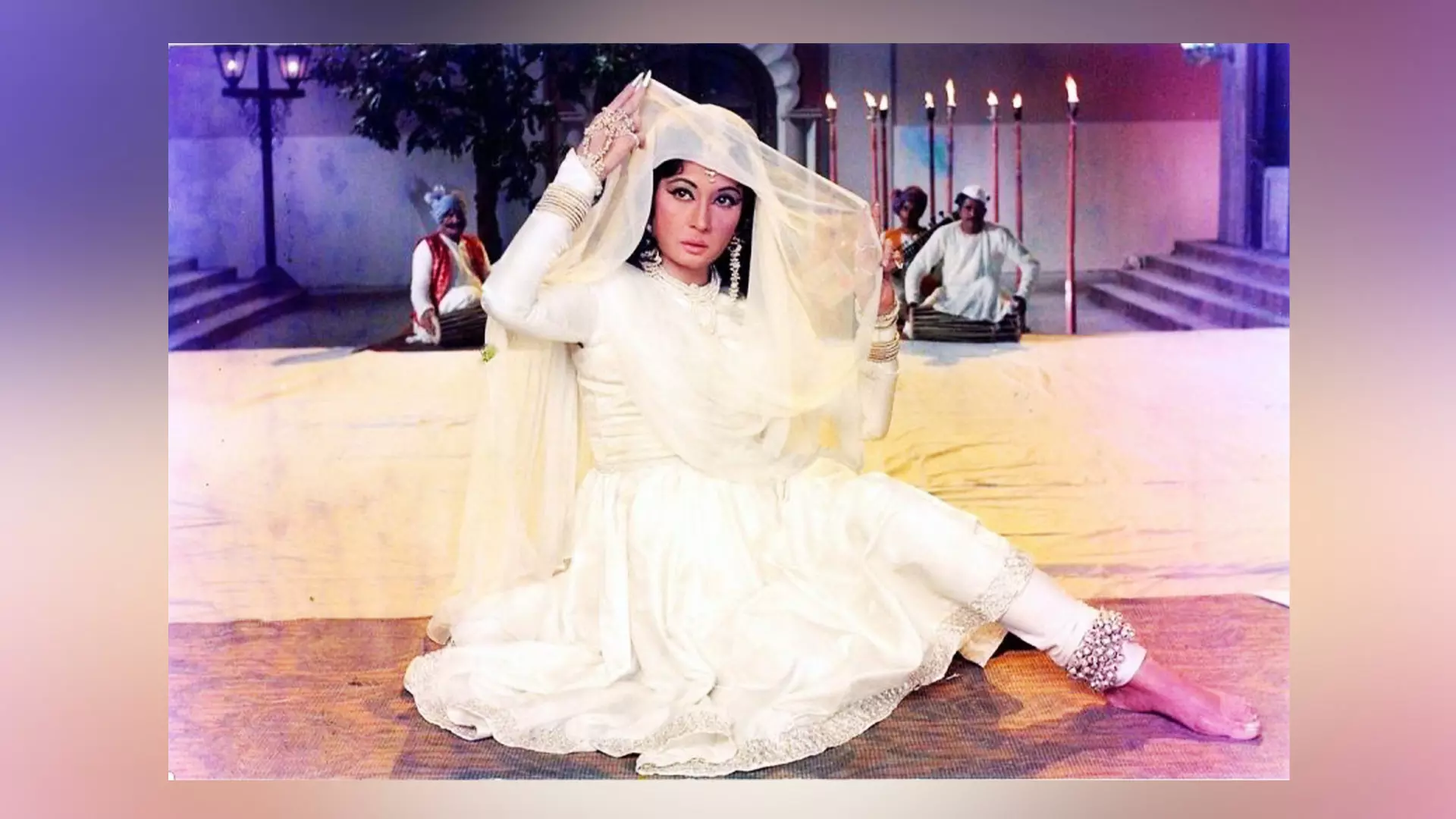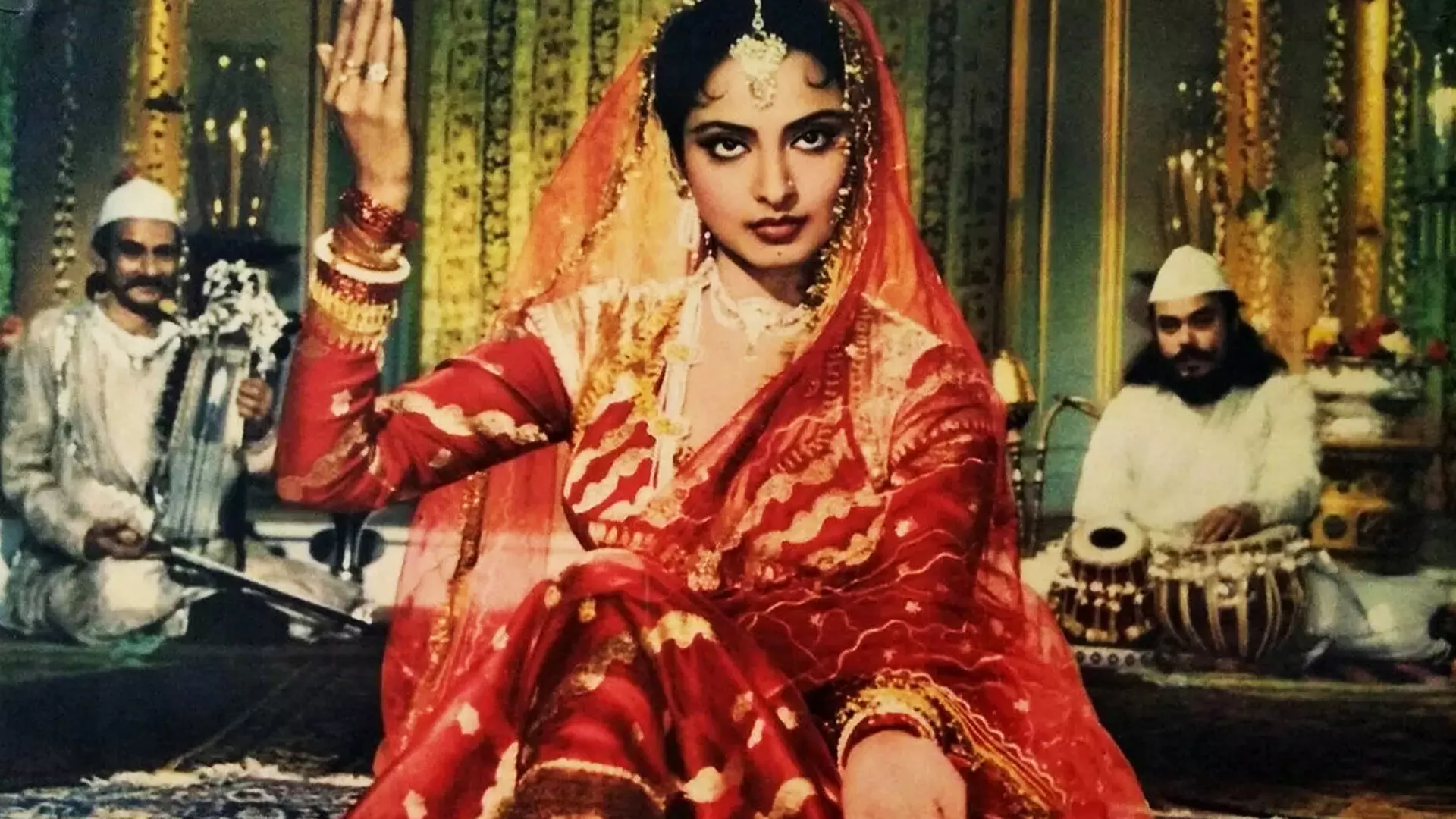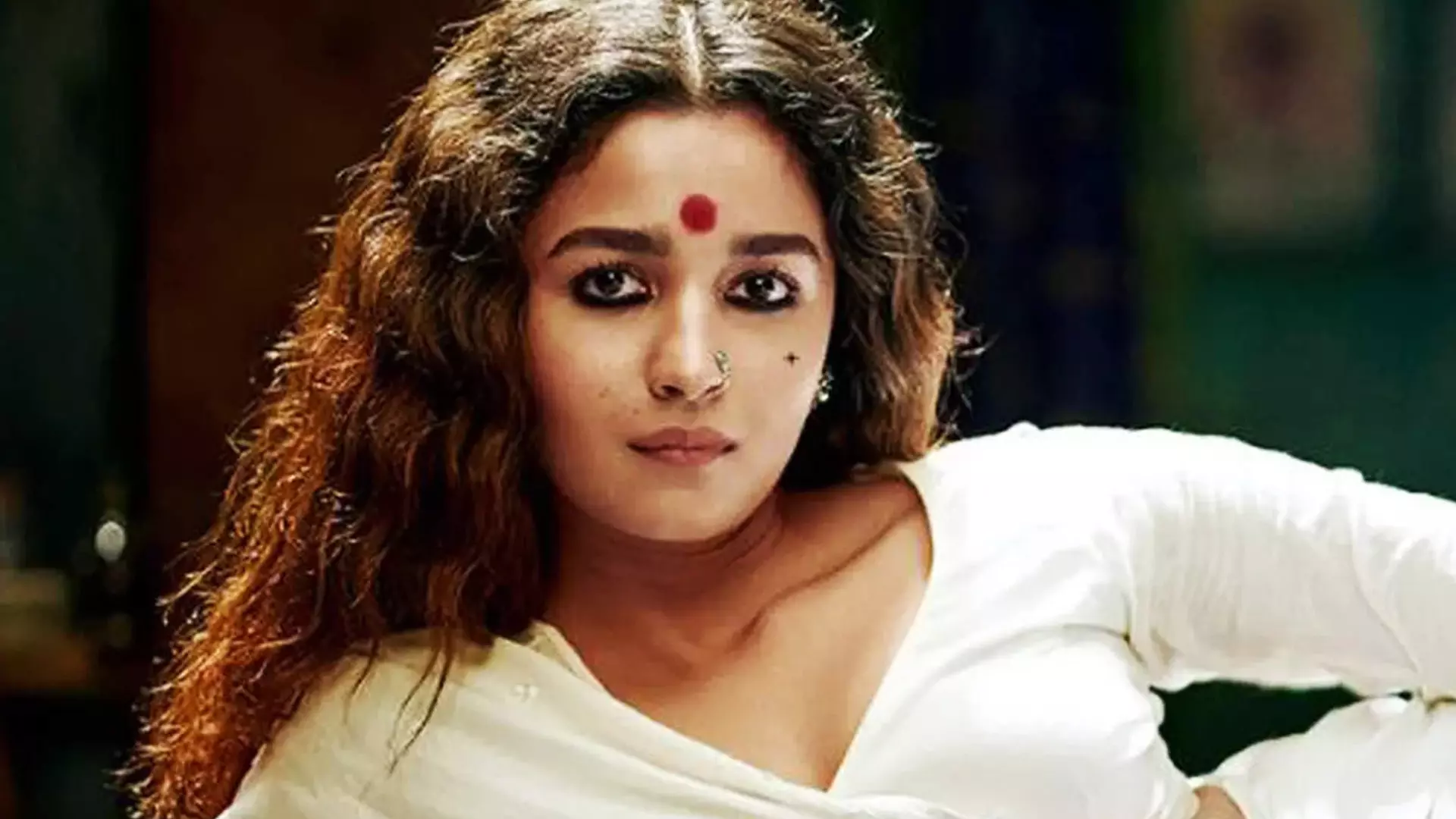
- Home
- India
- World
- Premium
- THE FEDERAL SPECIAL
- Analysis
- States
- Perspective
- Videos
- Sports
- Education
- Entertainment
- Elections
- Features
- Health
- Business
- Series
- In memoriam: Sheikh Mujibur Rahman
- Bishnoi's Men
- NEET TANGLE
- Economy Series
- Earth Day
- Kashmir’s Frozen Turbulence
- India@75
- The legend of Ramjanmabhoomi
- Liberalisation@30
- How to tame a dragon
- Celebrating biodiversity
- Farm Matters
- 50 days of solitude
- Bringing Migrants Home
- Budget 2020
- Jharkhand Votes
- The Federal Investigates
- The Federal Impact
- Vanishing Sand
- Gandhi @ 150
- Andhra Today
- Field report
- Operation Gulmarg
- Pandemic @1 Mn in India
- The Federal Year-End
- The Zero Year
- Science
- Brand studio
- Newsletter
- Elections 2024
- Events
From ‘Pakeezah’ to ‘Heeramandi’: How tawaifs are portrayed on celluloid

They had many names. In the north, they were called tawaifs, and in the south devadasis. They were addressed as baijis in Bengal, and known as naikins in Goa. The infamous courtesans or nautch girls of the British era shaped the cultural and political landscapes of their times, but they themselves hovered on the margins, always viewed through a lens of moral judgment. Their world...
They had many names. In the north, they were called tawaifs, and in the south devadasis. They were addressed as baijis in Bengal, and known as naikins in Goa. The infamous courtesans or nautch girls of the British era shaped the cultural and political landscapes of their times, but they themselves hovered on the margins, always viewed through a lens of moral judgment. Their world remained shrouded in blankets of disgust, revulsion, shame and stigma. But as Sanjay Leela Bhansali’s Netflix series Heeramandi is all set to show, the courtesans were queen once: The queens of hearts.
In Heeramandi: The Diamond Bazaar, made with Bhansali’s majestic signature flair and penchant for opulence, we are going to meet the courtesans of Lahore in pre-independence India. In this story of the battle of succession between arch nemeses Mallikajaan (Manisha Koirala) and Fareedan (Sonakshi Sinha), we will also meet Bibbojaan (Aditi Rao Hydari), who ‘yearns for freedom, and not just her own’; Lajjo (Richa Chadha), whose ‘beauty glows on the outside’, but she ‘hides tragic pain on the inside’; Waheeda (Sanjeeda Shaikh), who hankers for power even as others struggle for love; and Alamzeb (Sharmin Segal), who wants the liberty to love.

In Heeramandi: The Diamond Bazaar, made with Bhansali’s majestic signature flair and penchant for opulence, we are going to meet the courtesans of Lahore in pre-independence India.
Tawaifs have long been figures of intrigue, and allure. Their portrayal in films, throughout the decades, has evolved significantly, mirroring broader social, cultural, and political shifts. Today, the popular perception of tawaifs seems to be changing. In a big way. Hindi films in the 1960s and 1970s relegated tawaifs to the background as mere objects of desire or moral degradation, but several films in recent decades have sought to reexamine the prevalent notions surrounding these highly skilled entertainers who acted as receptacles of culture. The only memorable film of this period — which later became a cult film — was Pakeezah, directed by Kamal Amrohi, which was released in 1972. It is celebrated for its exquisite portrayal of the life of a courtesan in the Lucknowi culture of the 19th century.
The word pakeezah (meaning ‘pure of heart’), resonated deeply with the essence of the movie and the portrayal of its main character, Sahibjaan, played with elan by Meena Kumari, who is considered one of the finest actresses in the history of Indian cinema. Sahibjaan is raised in a brothel, unaware that she is the daughter of a wealthy Nawab and his lover, Nargis, also a courtesan, whose love story meets a tragic end because of the family opposition. Sahibjaan’s mother, before dying, leaves her in the care of her aunt, Nawabjaan, with the hope that her daughter would lead a different life. However, Sahibjaan grows up to follow in her mother’s footsteps, living a life enmeshed in singing and dancing in the brothel. The film’s music, composed by Ghulam Mohammed and later, after his demise, by Naushad, touched a chord with viewers, and songs like Chalte Chalte and Inhi Logon Ne became phenomenally popular.
I remember Pakeezah fondly because it was my father’s favourite film; he had gone to theatres to watch it, along with my mother. It was perhaps the only two films, besides K. Asif’s 1960 magnum opus, Mughal-E-Azam, that my parents went to theatres to watch. A defining moment in the film occurs when Sahibjaan receives a letter from a stranger, admiring her feet and expressing his love for her. This encounter sparks a dream for a life beyond her daily grind as a courtesan. The anonymous admirer, Salim, played by Raaj Kumar, is the embodiment of the unconditional love that Sahibjaan craves. Pakeezah holds a special place in Indian cinema for its artistic finesse, powerful story, and, of course, the haunting performance by Meena Kumari, whose own life seemed to mirror the tragedy bedevilling her character.
Pakeezah set a template. In the 1980s, filmmakers started taking a more nuanced approach and presenting them as multifaceted characters with rich inner lives. Muzaffar Ali’s Umrao Jaan (1981), starring Rekha in the titular role and based on the 1905 novel Umrao Jaan Ada by Mirza Hadi Ruswa, explores the life of a tawaif in 19th-century Lucknow. Through its lyrical storytelling, the film delves into the complexities of Umrao Jaan’s character — her refinement in poetry and classical dance, her resilience in the face of betrayal, and her search for love and dignity. Rekha’s pitch-perfect portrayal forced us to appreciate the tawaif’s art, and humanity. In one of her most iconic performances, Rekha lent grace and emotional intensity to the character of a young girl, Amiran, who is kidnapped from her family and sold to a brothel. Under the guidance of Khanum Sahib, played with gravitas by Shaukat Kaifi, she is transformed into Umrao Jan, an immensely cultured courtesan, skilled in poetry, dance, and music.

Pakeezah set a template. In the 1980s, filmmakers started taking a more nuanced approach and presenting them as multifaceted characters with rich inner lives.
As Umrao Jan grows into her role, she attracts the affections of various men, yet her quest for genuine love remains unfulfilled, which prompts her to reflect deeply on her life and choices. Ali’s direction skillfully captures the elegance and melancholy of the courtesan’s world, offering a visually sumptuous experience that is further enriched by Khayyam’s memorable musical score. The songs, penned by Shahryar, are in sync with the storyline; they bring to the fore Umrao Jan’s innermost thoughts and emotions. Dil Cheez Kya Hai and In Aankhon Ki Masti Ke are some of its standout tracks. Cinematography by Nadeem Khan enhances the film’s aesthetic appeal; Lucknow’s beatific and lush landscapes are on full display. The film addresses the predicaments of courtesans, who, despite their refined talents and intellect, are marginalised and treated as commodities. Umrao Jan struggles to find her place in a world that admires her beauty and art but denies her respect and love.
In yet another Hindi film Tawaif (1985), directed by BR Chopra, Rati Agnihotri stars as the protagonist, Sultana, alongside other prominent actors such as Ashok Kumar, Rishi Kapoor, and Poonam Dhillon. There is a clear attempt to humanize the tawaif; the film distances itself from the common stereotypes and brings into sharp relief the idea that her profession does not define her moral compass or personal virtues. It shows Sultana as a victim of circumstances created by society rather than a symbol of moral decadence, which was a prevalent notion at the time. One of the critical aspects of the film is its effort to underscore the discrimination faced by tawaifs despite their contributions to arts and culture. It raises important questions about our hypocrisy and the complex dynamics of respectability, love, and acceptance.

Rekha as Umrao Jaan in Muzaffar Alis film Umrao Jaan.
In Bhansali’s adaptation of Sarat Chandra Chattopadhyay’s novel Devdas (2002), Chandramukhi (Madhuri Dixit) is a courtesan of great renown and beauty, who falls head over heels in love with Devdas (Shah Rukh Khan), a tragic figure torn between his duties and desires. Unlike the typical courtesan characters of that era who are often portrayed in a negative light, Chandramukhi in Bhansali’s Devdas is a strong, compassionate, and morally upright figure. Her character is introduced to viewers as Devdas stumbles into her kotha while in a state of drunken despair, seeking refuge from his obligations and his painful separation from Paro, his childhood love. Chandramukhi’s initial fascination with Devdas quickly blooms into deep affection even though she knows about his undying love for Paro. This unrequited love forms the cornerstone of her character arc.
Madhuri emotes Chandramukhi’s unspoken yearnings and intense emotions with her gestures and expressions. Her dance sequences, especially in the songs Maar Dala and Dola Re Dola (the latter a duet with Aishwarya Rai Bachchan, who plays Paro), are both visual and emotional high points of the film. Chandramukhi’s love for Devdas is selfless and giving. She cares for him during his self-destructive phases, offering him comfort and solace, asking nothing in return. Chandramukhi represents the path not chosen by Devdas, a possibility of redemption and genuine affection that he is unable to embrace fully and his inability to escape his downward spiral. Before Bhansali returned with Gangubai Kathiawadi (2021), there was one notable film: Dedh Ishqiya (2014), directed by Abhishek Chaubey, in which Madhuri plays Begum Para, a character with a background as a tawaif. The film cleverly weaves themes of love, deception, and the quest for freedom, while highlighting the nuanced intelligence, wit, and grace of its central character. It presents the tawaif not as a victim of her circumstances but as a strong, sophisticated woman navigating a patriarchal world with agency and cunning.

Alia Bhatt as Gangubai Kathiawadi in the eponymous Sanjay Leela Bhansali's film.
Gangubai Kathiawadi, set during the 1950s and 1960s in the red-light district of Kamathipura in Mumbai, belongs to Alia Bhatt. Based on a real character, Gangubai leverages her intelligence and empathy to become a leader of women and children in her community. This is a marked deviation from the often one-dimensional depiction of tawaifs in mainstream cinema. Bhansali seems to draw our attention to the institutionalised exploitation and social stigmatization tawaifs face, while also showcasing their strength, dignity, and the tight-knit community they form in the face of adversity. From a young, innocent girl sold into prostitution Gangubai transforms into a formidable madam of the brothel and an advocate for the rights of her fellow tawaifs.
A year before Gangubai, Tabu stole our hearts with her layered performance as Saeeda Bai in Mira Nair’s adaptation of Vikram Seth’s sprawling novel, A Suitable Boy. Set in the early 1950s, the film is rooted in the societal and political churnings taking place in the newly independent India; Saeeda Bai becomes a focal point for exploring themes of love, loss, and longing. Tabu, with her profound emotional range and commanding screen presence, gets into the skin of Saeeda Bai — a poetess, a lover, and a mentor. Through her interactions, particularly with the young and impressionable university student Maan Kapoor (played by Ishaan Khatter), Saeeda’s character reveals her sensitivity, intelligence, and wisdom — and also the unmistakable, palpable sense of vulnerability. Through the medium of cinema, the legacy of tawaifs is being revisited, reinterpreted, and appreciated anew. One hopes that Heeramandi does not take away the humanity of the women who sold their bodies, but whose soul always kept the hope of deliverance alive.
